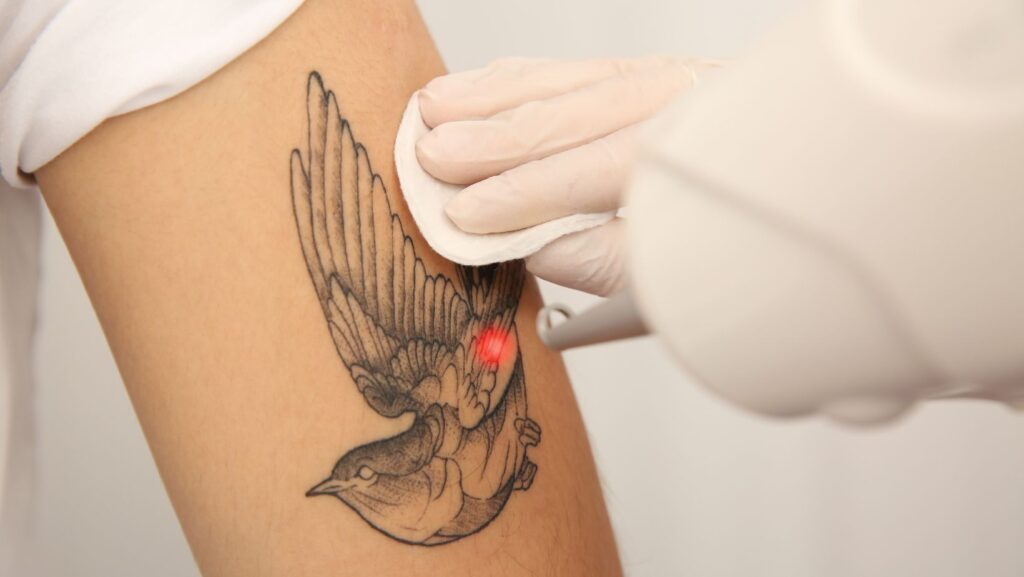If you’re considering removing a tattoo, one of the first questions on your mind is likely, “What are the success rates?” The good news is that modern laser tattoo removal techniques have come a long way, offering impressive results for many people. However, it’s essential to understand that several factors can influence the outcome of your treatment. In this article, we’ll explore what you can expect from tattoo removal success rates and the variables that may impact your journey to ink-free skin.
Understanding Laser Tattoo Removal
Laser tattoo removal works by targeting the ink pigments in your skin with high-intensity light pulses. The laser energy breaks down the ink particles, allowing your body’s immune system to naturally absorb and eliminate them over time. While this process is generally safe and effective, it’s not a one-size-fits-all solution.
Factors Affecting Success Rates
Several key factors can influence the success of your tattoo removal treatment:
- Ink color: Some colors, like black and dark blue, respond better to laser treatment than others, such as green, yellow, and purple.
- Tattoo size and location: Larger tattoos may require more sessions, and those located on areas with less circulation (like the ankles or fingers) can be more challenging to remove.
- Skin type: People with darker skin tones may be at a higher risk for side effects like hyperpigmentation or hypopigmentation.
- Tattoo age: Older tattoos tend to be easier to remove than newer ones, as the ink has had more time to fade naturally.
What to Expect During Treatment
Most people need multiple laser sessions to achieve optimal results. The number of treatments required varies depending on the factors mentioned above, but typically ranges from 6 to 12 sessions spaced 6 to 8 weeks apart. During each session, you may experience some discomfort, similar to the feeling of a rubber band snapping against your skin. However, most patients find the sensation tolerable, and the procedure is relatively quick.
Potential Side Effects and Risks
While laser tattoo removal is generally safe when performed by a qualified professional, there are some potential side effects and risks to be aware of. These may include:
- Skin irritation, redness, and swelling
- Blistering or scabbing
- Hyperpigmentation (darkening of the skin) or hypopigmentation (lightening of the skin)
- Scarring (rare but possible)
Your provider will discuss these risks with you and provide guidance on minimizing their likelihood and managing any side effects that may occur.
Choosing the Right Provider
To maximize your chances of success and minimize the risk of complications, it’s crucial to choose a reputable provider for your laser tattoo removal services. In Sydney, there are many skilled professionals who specialize in this treatment. Look for a provider with extensive experience, proper training, and advanced laser technology to ensure the best possible results.
Aftercare and Maintenance
Proper aftercare is essential for promoting healing and optimizing your tattoo removal results. Your provider will give you specific instructions, but generally, you’ll need to keep the treated area clean, moisturized, and protected from the sun. Avoid picking at any scabs or blisters that may form, and contact your provider if you experience any unusual symptoms or signs of infection.
Conclusion
Tattoo removal success rates have greatly improved thanks to advancements in laser technology and techniques. While individual results may vary based on factors like ink color, tattoo size, and skin type, most people can achieve significant fading or complete removal with a series of treatments. By choosing an experienced provider, such as those offering laser tattoo removal services Sydney, and following proper aftercare guidelines, you can maximize your chances of success and enjoy the confidence that comes with ink-free skin.



More Stories
How Solar Generators Are Powering the Future of Portable Energy
Benefits of Outsourcing Accounts Receivable Tasks
Leading Sports to Bet on Using Mobile Apps in India